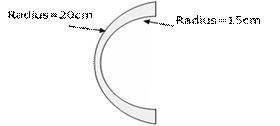
Читайте также:
|
Summative assessment
Term 3
Name______________________ Grade___________Date__________
Task1. Fill in the blanks
1. At constant temperature, an ideal gas is at s pressure of 20 cm of mercury and a volume of 5 L. If the pressure is increased to 40 cm of mercury, the new volume will...........................................2.5 L.............................................(point 1)
2. At constant volume, an ideal gas is heated from 5 °C to 283°C. The original pressure was 1.5 atm. After heating, the pressure will be …………………………………3 atm…………………………………….(point 1)
3. At constant pressure, 6 m³ of an ideal gas at 75°C is cooled until its volume is halved. The new temperature of the gas will be…………………………………150C или 423 K…………………………………..(point 1)
4. What is the efficiency of a heat engine that performs 700 J Of useful work from a reservoir of 2700 J?......................26%..................................(point 1)
5. When light passes from a more optically dense medium into a less optically dense medium, it will bend......towards.................. (towards, away from) the normal................................................................................................. (point 1)
6. Characteristics of an image that formed by concave lens is…………virtual, upright, diminished, located on the object’s side of the lens……………………………………………………..…….(point 1)

7. The average velocity or root mean square velocity of a molecule in a sample of oxygen at 0 °C is……......461.3 m/s...................................................(point 1)
Task2. Solve the problems.
8. Calculate the critical angle for the diamond-air boundary. Draw the diagram for solution. Refer to the table of indices of refraction if necessary. (point 2)
9. The p-V diagram shown is that of an ideal engine cycle. Calculate for each processes work, change in internal energy and heat. Make a table and show your results in a table.
(points 4)

10. Explain the phenomena DISPERSION. Dispersion is the idea that the frequency of a wave depends on its velocity (speed)......................................(point 2)
11. For the lens shown in figure
a) Find the focal length of the thin lens shown. The index of refraction is 1.5 b) A 12cm-tall object is placed 50cm away from this lens. Find the image location and height.
c) Is this image real or virtual?
d) Draw the ray diagram. (point 4)

12. Using the data for the three cases, shown in figures to given for the lens, shown in figure.
a) determine the focal length of the lens.
b) determine the type of the lens. Explain your answer.(point3)
|

|

|

Reflection.
| № | Tasks | Rubrics | Criterion | Score | |||
| A student | A | B | C | D | |||
| Question on the ideal gas law (Boyle’s -Mariott) | knows the formula of the given law | ||||||
| Question on the ideal gas law (Charles) | knows the formula of the given law | ||||||
| Question on the ideal gas law (Gay-Luccacs) | knows the formula of the given law | ||||||
| Question on the efficiency of the heat engine | knows the formula of efficiency | ||||||
| Question on the phenomenon of refraction of light | understands the concept of refraction | ||||||
| Question on image formed by a converging lens | understands characteristics of image | ||||||
| Question on kinetic theory of ideal gas | able to calculate the root- mean square velocity of the ideal gas molecules motion by the formula | ||||||
| Problem on the total internal refraction phenomenon | able to draw ray diagram, calculate the critical angle for the given substance | ||||||
| Problem on ideal engine cycle | able to - use the data from the graph to determine work, change in internal energy, heat at each step of the cycle, -make a proper table | ||||||
| Question on the dispersion phenomenon | -demonstrates ability to summarize knowledge on refraction phenomena to explain dispersion of light | ||||||
| Problem on a thin lens formula | shows the ability to -analyze the given information to solve the problem –to calculate the focal length, location of image, height of image; to describe the image formed; - to sketch the ray diagram for the given situation. | ||||||
| Problems on the thin lens | exhibits the ability to - to make proper calculations on the base of the data given graphically; -transfer the correct data to for the proper explanation of the type of the lens | ||||||
| Total |
Дата добавления: 2015-10-30; просмотров: 113 | Нарушение авторских прав
| <== предыдущая страница | | | следующая страница ==> |
| Связь и интернет | | | Вопрос 4: Теорема Жегалкина о представимости функции алгебры логики полиномом. |